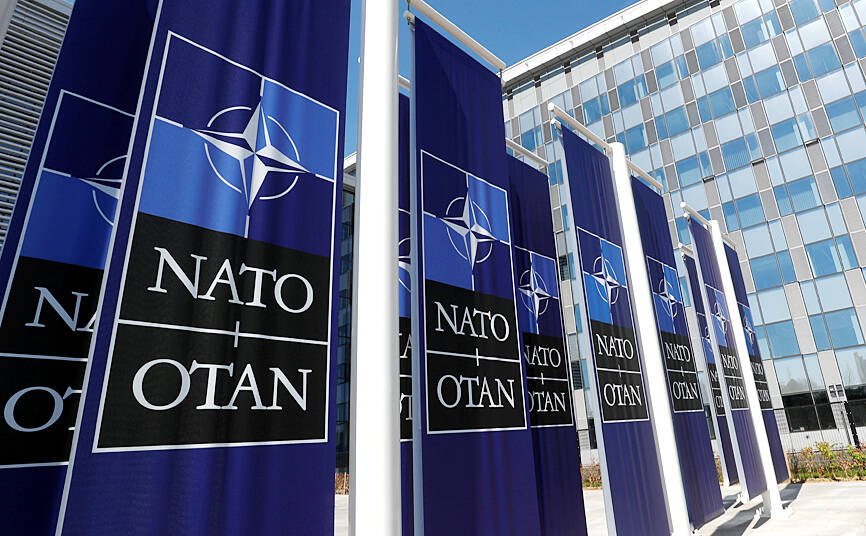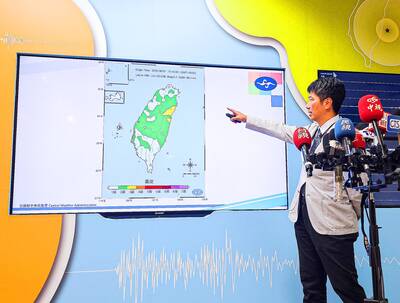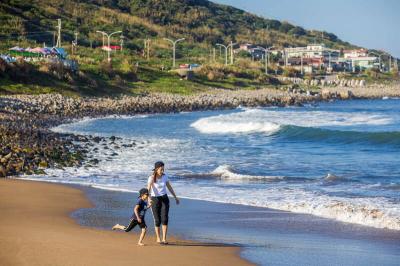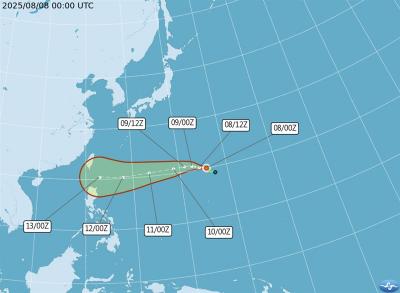NATO could be drawn into a conflict in the Taiwan Strait if Chinese forces attacked the US mainland or Hawaii, a NATO Defense College report published on Monday says.
The report, written by James Lee, an assistant research fellow at Academia Sinica’s Institute of European and American Studies, states that under certain conditions a Taiwan contingency could trigger Article 5 of NATO, under which an attack against any member of the alliance is considered an attack against all members, necessitating a response.
Article 6 of the North Atlantic Treaty specifies that an armed attack in the territory of any member in Europe, North America, Turkey or islands under the jurisdiction of any of the parties in the North Atlantic area north of the Tropic of Cancer could trigger Article 5, Lee wrote.

Photo: Reuters
That means China could trigger Article 5 by launching a missile attack on military facilities in the continental US, an unlikely situation that has nevertheless occurred in several recent war games held by the Center for a New American Security, he said.
In one scenario, China detonates a nuclear weapon over California, he added.
A direct attack by Beijing on the continental US would certainly draw NATO into a conflict over Taiwan, up to and including the defense of Taiwan proper, Lee said.
A far more likely scenario is that the fighting would spill out of the first island chain to US bases in Hawaii, a US state with ambiguous status under the treaty, he said.
The NATO secretariat in 1965 issued a legal opinion saying that Articles 5 and 6 do not apply to Hawaii, as it became a part of the US as a “state” and not a “territory,” but Lee said that opinion was debatable, as Article 6 does not exclude US states, and presumably “territory” would apply to US states.
However, US domestic law defines “North American area” as including the US and its territories, which would include Hawaii and Guam, which former British minister of state for Europe and the Americas Alan Duncan in 2017 said apply under the treaty, Lee said.
As such, an attack on Hawaii would draw NATO members into a US-China conflict over Taiwan should hostilities escape the confines of the Taiwan Strait and the Philippines, he said.
Should such an attack trigger Article 5, the scope of NATO actions would likely fall short of an obligation for members to fight in the Indo-Pacific region, as the purpose of Article 5 is “to restore and maintain the security of the North Atlantic area,” he said.
NATO forces would most likely be required to take over defensive missions as US forces redeploy to the region from the North Atlantic, where the threat of Russian aggression, especially probing attacks against Baltic states, is expected to rise, Lee said.
The scale of such a military commitment would require significant troops and resources not seen since NATO mobilized during the Korean War to bolster Europe’s defenses against potential aggression from the Soviet Union, he said.

Aftershocks from a magnitude 6.2 earthquake that struck off Yilan County at 3:45pm yesterday could reach a magnitude of 5 to 5.5, the Central Weather Administration (CWA) said. Seismological Center technical officer Chiu Chun-ta (邱俊達) told a news conference that the epicenter of the temblor was more than 100km from Taiwan. Although predicted to measure between magnitude 5 and 5.5, the aftershocks would reach an intensity of 1 on Taiwan’s 7-tier scale, which gauges the actual effect of an earthquake, he said. The earthquake lasted longer in Taipei because the city is in a basin, he said. The quake’s epicenter was about 128.9km east-southeast

GENSLER SURVEY: ‘Economic infrastructure is not enough. A city needs to inspire pride, offer moments of joy and foster a sense of belonging,’ the company said Taipei was named the city with the “highest staying power” in the world by US-based design and architecture firm Gensler. The Taiwanese capital earned the top spot among 65 cities across six continents with 64 percent of Taipei respondents in a survey of 33,000 people saying they wanted to stay in the city. Rounding out the top five were Vietnam’s Ho Chi Minh City (61 percent), Singapore (59 percent), Sydney (58 percent) and Berlin (51 percent). Sixth to 10th place went to Monterrey, Mexico; Munich, Germany; Sao Paulo, Brazil; Vancouver; and Seoul. Cities in the US were ranked separately, with Minneapolis first at

The New Taipei City Government today warned about the often-overlooked dangers of playing in water, and recommended safe swimming destinations to cool off from the summer heat. The following locations in the city as safe and fun for those looking to enjoy the water: Chienshuiwan (淺水灣), Baishawan (白沙灣), Jhongjiao Bay (中角灣), Fulong Beach Resort (福隆海水浴場) and Sansia District’s (三峽) Dabao River (大豹溪), New Taipei City Tourism and Travel Department Director-General Yang Tsung-min (楊宗珉) said. Outdoor bodies of water have variables outside of human control, such as changing currents, differing elevations and environmental hazards, all of which can lead to accidents, Yang said. Sudden

Tropical Storm Podul has formed over waters north-northeast of Guam and is expected to approach the seas southeast of Taiwan next week, the Central Weather Administration (CWA) said today. The 11th Pacific storm of the year developed at 2am over waters about 2,660km east of Oluanpi (歐鑾鼻), Pingtung County — Taiwan's southernmost tip. It is projected to move westward and could have its most significant impact on Taiwan on Wednesday and Thursday next week, the CWA said. The agency did not rule out the possibility of issuing a sea warning at that time. According to the CWA's latest update, Podul is drifting west-northwest